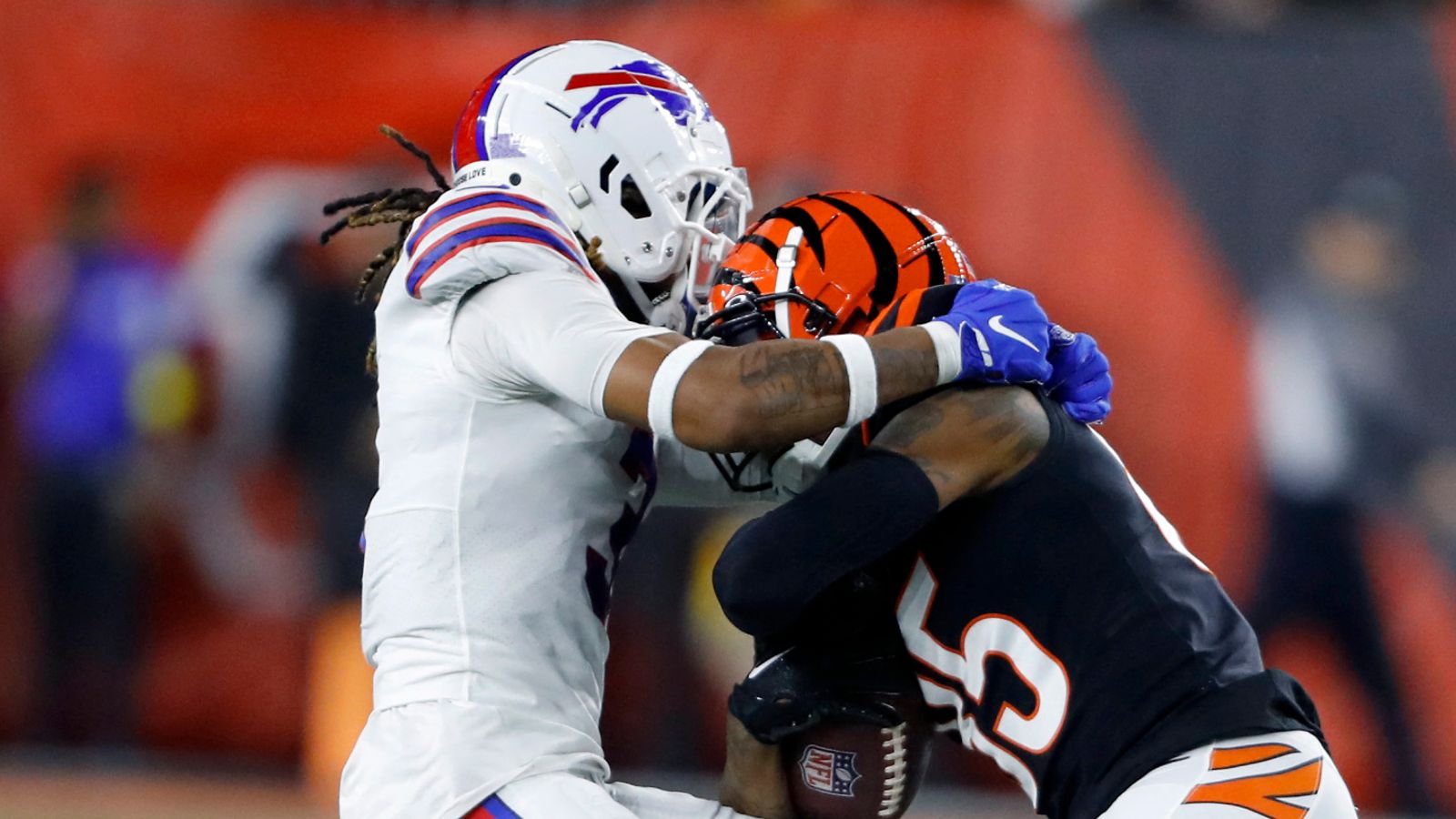The tackle was innocuous. He stood up straight after the impact, only to collapse seconds later. So what happened to Damar Hamlin?
The American football star, and a role model for millions, remains in a critical condition at a Cincinnati hospital.
The Buffalo Bills player, 24, was given CPR for about 10 minutes after he collided with Cincinnati Bengals wide receiver Tee Higgins in the incident on Monday night.
While we wait for the doctors treating him to give updates, the medical world is coalescing around a condition called commotio cordis.
“It’s very rare to happen. It requires the perfect storm,” Washington-based cardiologist Khaklid Aljabri told me.
“It’s a condition that can result in sudden cardiac death when a high impact, blunt blow to the chest in front of the area of the heart occurs at the right moment – a very small window within the cardiac rhythm cycle,” he said.
The window for this to occur is staggeringly small, at just 20 milliseconds.
Damar Hamlin: Team releases update after NFL player’s heart attack on pitch
Damar Hamlin: Buffalo Bills player given CPR on pitch after suffering cardiac arrest during NFL game
Sir Lewis Hamilton ‘excited’ after buying stake in NFL franchise Denver Broncos
The beat of our hearts has a particular rhythm. At the end of each beat is a wave known as the T-wave. In layman’s terms, it’s the moment the heart resets before the next beat.
If the chest is struck hard enough on the heart just as the T-wave is in its upward motion, then it can break the beat and send the heart into fibrillation.
“Normally, the heart contracts forcefully, rhythmically, and sends blood to the brain and various body organs. With fibrillation, the heart quivers, effectively sending no blood.
“Within a few seconds, no blood reaches the brain, usually between six and eight seconds, and then within 10 to 15 seconds, complete blood circulation comes to a standstill,” Mr Aljabri said.
“This probably explains why Hamlin was able to briefly stand up before collapsing again to the ground.”
Doctors will now be running numerous tests to see if anything else could have contributed to the incident.
“If I were the treating doctor, I would still run a battery of tests to make sure that now we’re not missing something else. And that includes looking at pre-existing structural heart disease,” Mr Aljabri said.
“Professional athletes are aggressively screened for structural heart disease. So if he had a pre-existing condition, I would expect that would have been picked up by now.”
COVID vaccine theory
He also dismissed a theory that the incident could be linked to a coronavirus vaccine.
“Now, there are people talking about the possibility that he had some kind of silent subclinical myocarditis that’s associated with a COVID vaccine,” he said.
“That would be at the very bottom of my differential diagnosis.”
Mr Aljabri added: “We have a witnessed direct, blunt trauma to the chest, a witnessed loss of consciousness within seconds, a confirmed shock rhythm because he needed to be shocked with a defibrillator. All of that, plus, hopefully the absence of any existing structural disease, will make the most likely diagnosis of commotio cordis, a confirmed one.”
Hamlin’s recovery will depend on the length of time his body was deprived of oxygenated blood. Doctors opted to treat him where he collapsed for ten minutes before moving him. His heart was restarted in this period.
Plea to learn CPR
“We witnessed what rapid CPR and defibrillation can do,” Mr Aljabri said.
“So please, if you can take training in basic life support or advanced cardiac life support, then do.
“This can happen anywhere: in gyms, in malls and stadiums that are becoming increasingly equipped with defibrillators that are very easy to use.
“And you never know when you might be in a position where you can save somebody’s life.”





